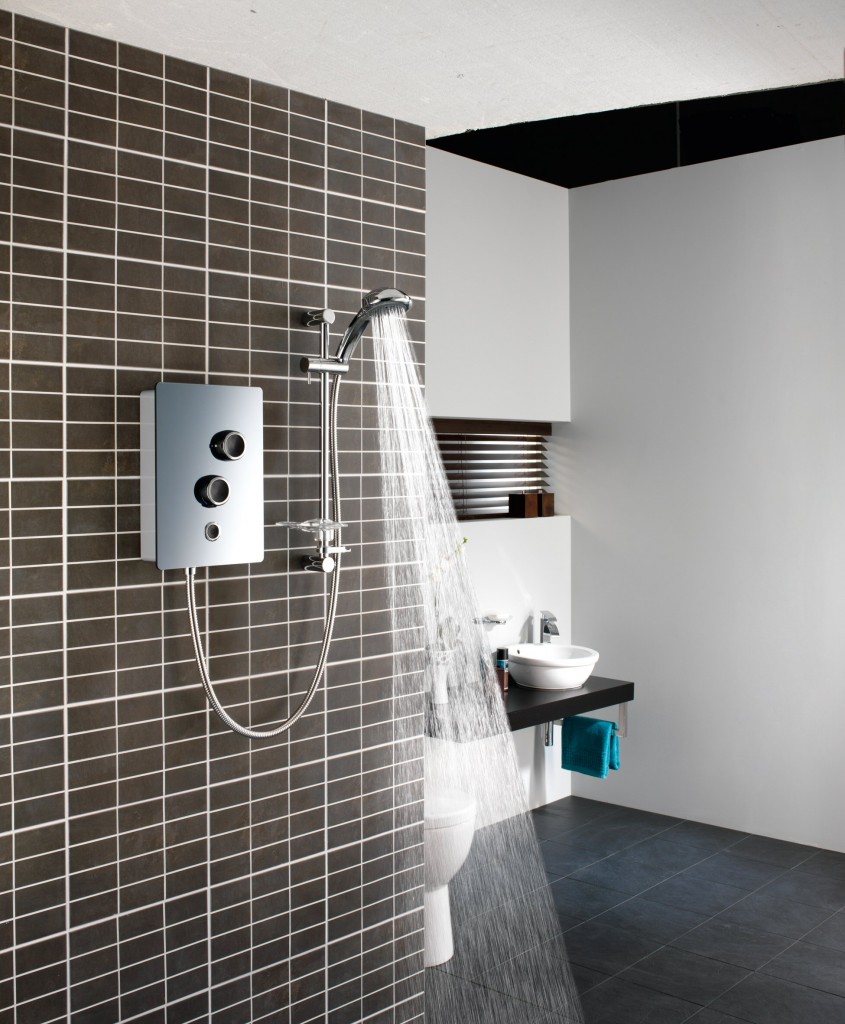This week, disaster has occurred. The shower in our one and only bathroom has ceased to function.
Anyone in a large family knows what a Major Disruption this is – there are six of us. We do NOT have time to bath (and we won’t even talk about the elderly boiler that only fills 3″ of bath water…).
But we’ve never chosen a shower before – our old one has been resident in the house longer than we have. Yes really.
So I had a look at shower options. Flailed a little.
Then I did what I do best, and called in the experts…
Steve Saunders, senior technical manager at Triton Showers, very kindly explains the different types of shower available:
Electric
Quick and easy to install, electric showers draw on a cold water supply and heat the water on demand so you can jump into the shower at any time of day. They are also extremely economic (99.7% energy efficient) as the cold water is heated by an element providing hot water instantly, with no wastage. In addition, the higher kilowatt rating you choose, the better the flow performance will be.
Mixer
Mixer showers draw from both hot and cold water supplies and usually deliver higher flow rates, making them ideal for homes with readily available hot water such as a combi boiler or large capacity hot water cylinder.
The shower works by mixing hot and cold water within the unit and delivering it through the shower head, which can be fixed, adjustable, or as a handset on a riser rail – making them flexible to individual needs. A shower pump can be added to a low pressure gravity-fed hot water system to increase water pressure, if required.
Thermostatic
Although temperature stabilised electric showers provide the temperature control suitable for a majority of installations, the demand for thermostatic peace of mind is growing, particularly for homes where young or elderly end users need to be taken into account.
Once you have set your ideal temperature, thermostatic electric and mixer showers will automatically ensure that this remains virtually constant, so even if someone turns on the tap, the water output temperature will be precisely maintained, making it an “ultra-safe” option.
Eco
Eco showers limit the flow of water to an efficient, usable level no matter what your household pressure system, whilst maintaining your selected temperature. Available in both electric and mixer variations they can offer up to 50% reduction in water usage when compared to conventional mixer showers, which meets the needs of the Code for Sustainable Homes.
Digital
Available in either mixer or electric variations, digital or remote control showers are an increasingly popular choice for the modern bathroom scheme as they offer an impressive combination of state of the art technology, stylish design and ease of installation.
The shower is controlled by a panel, which can be located within a 10m radius giving you more freedom in your bathroom layout. The panel then communicates with the power unit, located either in the loft or airing cupboard, to adjust the flow and temperature of the water. Water at a preferred showering temperature is then delivered through the ceiling or wall to the showerhead, depending on installation, and there is no unsightly plumbing visible.
And then you have to decide the best shower type to match the water system in place:
High Pressure Water Systems
If you have a hot water tank (cylinder), usually located within an airing cupboard, but don’t have a cold water tank (cistern) in your loft, then you have an unvented high pressure system. This can look similar to a low pressure system so always check beforehand to avoid any confusion, and be sure to take care in refurbished houses with disused water tanks.
If you have a combination (combi) boiler which heats water on demand so there is no hot water storage cylinder or cold water tank, then you have a high pressure system.
Low Pressure Water Systems
If you have a cold water tank in your loft and a hot water tank in your airing cupboard, then you have a gravity-fed system. It’s the most common household plumbing system and means that you have a low pressure water system.
However, having low pressure need not limit your choice of shower type – power showers are designed to offer optimum performance within a low pressure scenario and if your hot water cylinder is large enough, you could choose to boost your system pressure with a pump which can enable you to have the mixer shower you desire.
Cold Mains Water Supply
If cold water comes into your property through a rising main then you have a cold mains system. Most electric showers can simply be connected to a cold water mains supply – all you need to do is choose a style to suit your bathroom scheme. However if your cold mains water supply does not have the required minimum pressure for such showers, a tank fed pumped electric shower would be a good choice.
Fear Not – Help is at hand!
Triton’s product brochure features an easy-to-use key, with each shower being clearly labelled to show which household system it is suitable for, to make selection simple; A – all systems, H – high pressure systems, T – thermostatic systems, L – low pressure systems, P – low pressure systems when used with a pump, and C – cold mains systems.
If you are unsure which type of shower would be best you and your family visit the homeowner section at www.tritonshowers.co.uk where you can learn more about showering solutions and use the ‘help me choose’ function to select the best option for your bathroom.


